Seam trimming
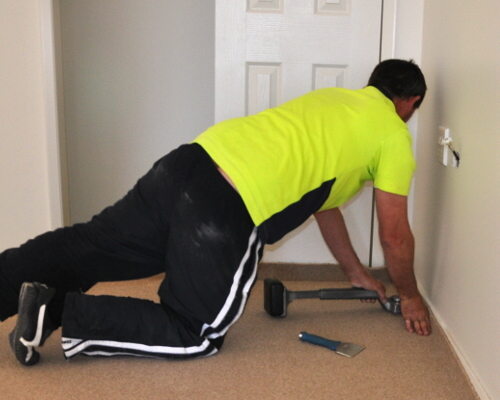 Audio for slide 1 (mp3 |6|KB)
Audio for slide 1 (mp3 |6|KB)
To prepare the carpet for seam trimming, bring the rolls into the room and lay them out in accordance with the floor covering plan.
Try to achieve a turn up at the walls of 50 mm, and an overlap at the seams of 50 to 75 mm.
You can use a knee kicker to help position the carpet.
Adjust the teeth on the knee kicker so that they reach through to the secondary backing.

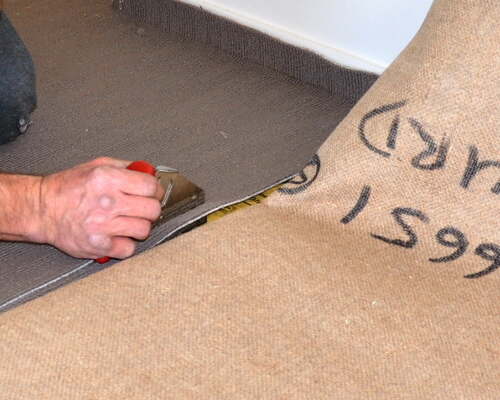 Audio for slide 2 (mp3 |6|KB)
Audio for slide 2 (mp3 |6|KB)
Trimming by row cutting
- Insert a row finder between the tuft rows and run it along the carpet to separate the rows and form a line in the face pile.
Alternative 'row finder' tools include a flat-head screwdriver or an awl with a dull point.
Slide the throat of the loop pile cutter in between the separated pile rows and then push the cutter along the line.

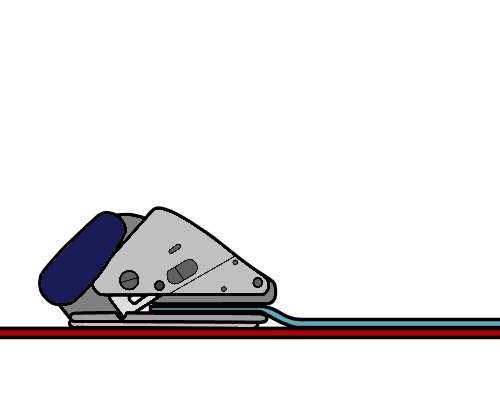 Audio for slide 3 (mp3 |6|KB)
Audio for slide 3 (mp3 |6|KB)
- Keep the base gently touching the top of the cushion underlay, without pushing down too hard, to stop it from getting caught on the underlay.
If the cutter is digging into the cushion, put a thin piece of plywood or masonite under the carpet seam and on top of the cushion.
Use a piece about 200 mm wide and 2 m long, and re-position it along the length of the seam as you go.

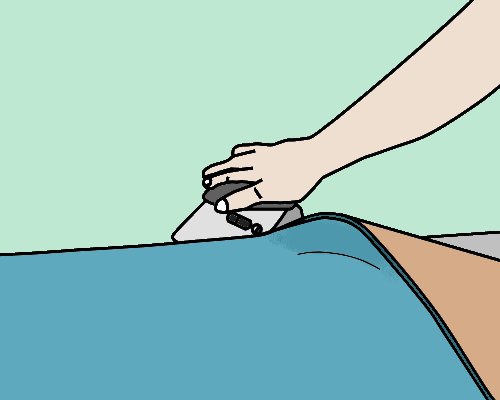 Audio for slide 4 (mp3 |6|KB)
Audio for slide 4 (mp3 |6|KB)
Trimming by trace cutting
- Trim the seam edge on one piece with a loop pile cutter, as described above.
- Lap the trimmed edge over the factory edge of the adjoining piece by 25 to 35 mm.
- Use a cushion back cutter to trim the second edge, holding the cutter against the first edge.
You can also put a plywood or masonite board under the cut to make the job easier.
By row cutting the first edge and trace cutting the second edge, you will generally be able to achieve a better quality seam than trying to join two row cut edges, especially if the rows aren't aligning perfectly.

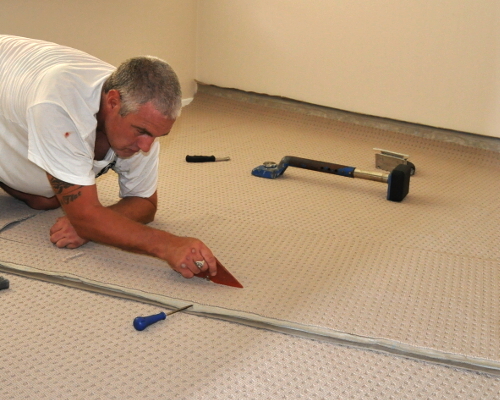 Audio for slide 5 (mp3 |6|KB)
Audio for slide 5 (mp3 |6|KB)
Trimming the selvedge
For most tufted carpets, it's best to trim off the selvedge (factory edge) if you are going to seam that edge.
This will help to avoid any problems with distortion in the tuft rows or a poorly bonded secondary backing.
On cut pile carpets, it will also allow you to achieve a uniform pile height on both sides of the seam, since the face yarn has a tendency to lie towards the outside of the edge.
Depending on the pile height, you should come in between 25 to 35 mm from the selvedge for your cut.

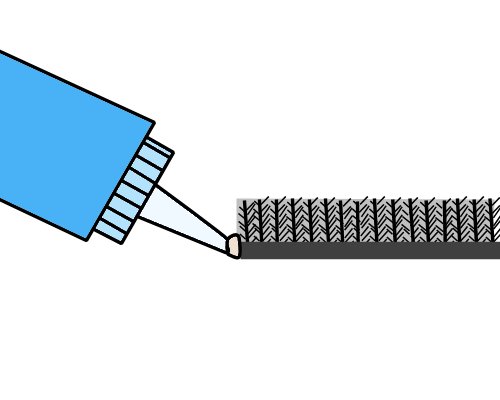 Audio for slide 6 (mp3 |6|KB)
Audio for slide 6 (mp3 |6|KB)
Applying seam sealer
Before the trimmed edges can be joined in a seam, the yarn should be sealed along the cut edge to stop it from unravelling.
Apply a bead of seam sealer along the base of the pile, where the face yarn enters the primary backing.
Then use your finger or thumb to smooth it in along the raw edge.
However, you need to be careful not to apply too much to the edge, or apply it too high on the pile, because you don't want any of the sealer to show on the surface.
For the same reason, make sure the carpet is lying face up so that it can only drip downwards if there is too much on the edge.






